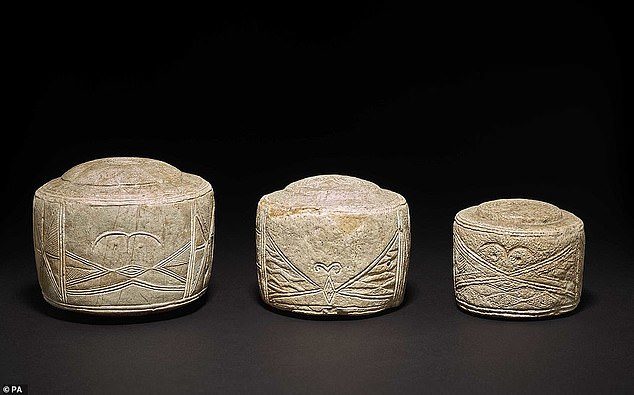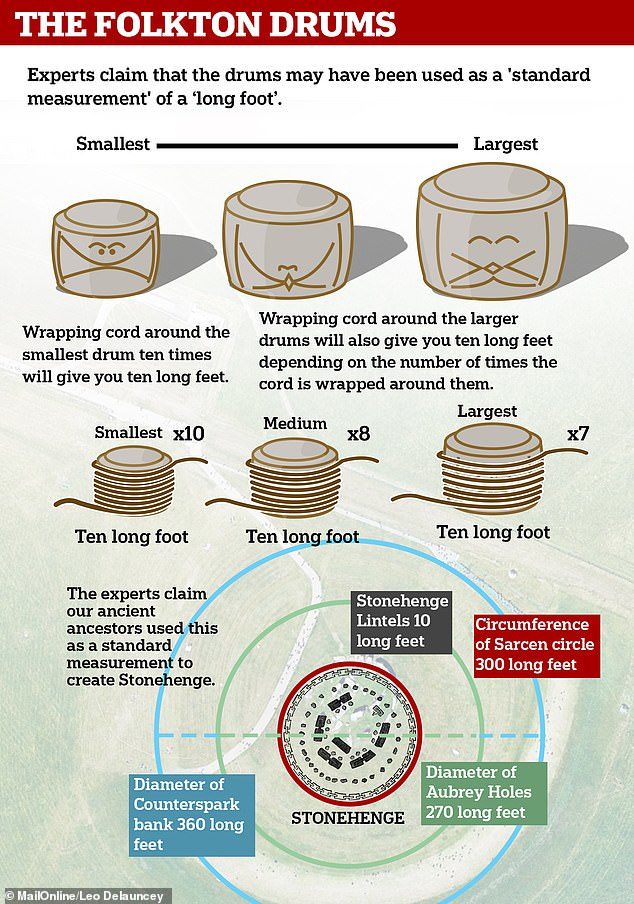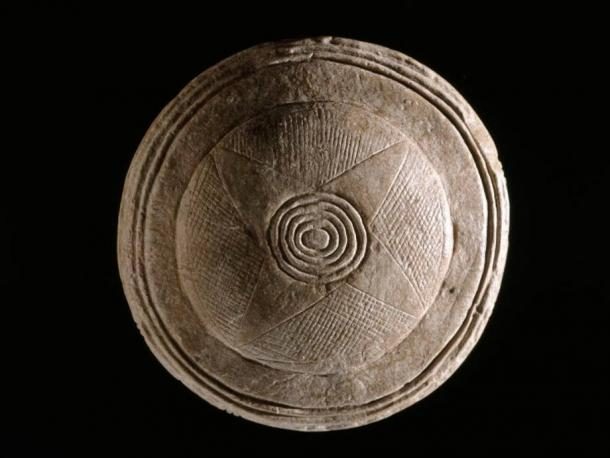
The unique 4,000-year-old Folkton drums date from the Neolithic period and were found in a child's grave in 1889.
Since their discovery, the pots - which are covered in intricate carvings - have been studied by generations of experts who struggled to find what they were used for.
Now researchers claim that were used as a 'standard measurement' to plan out the stone circles built by our Stone Age ancestors around 5,000 years ago.
Professor Mike Parker Pearson, from University College London, and Professor Andrew Chamberlain, from Manchester University, calculated the pots' circumference.
When they came to think about the different perimeters of the cylinders, they found that by wrapping string around each pot, the results all came roughly to a multiple of 0.322 metres - just over one foot.
Professor Chamberlain claims that this distance is a Stone Age measurement standard, which he has dubbed a 'long foot'.

The patterned pots were found buried in an infant's grave, dating back to between 2600 and 2000 BC, by an archaeologist 130 years ago.
Generations of experts have studied the drums and its carvings and motifs to try and understand what they were used for, most presuming they were decorative.
They were unlike any other artefacts found in Britain until the recent discovery of an undecorated chalk 'drum' in a pit in Lavant, Sussex, England.
However, Professors Chamberlain and Pearson claimed they were astonished to find that if you wrap a string around all of the cylinders a number of times they got the measurement of 3.22 metres long.
For the largest cylinder, they found that if you wrap cord around it seven times, the measurement was ten long foot (3.22m).
If you wrap it eight times around the medium-sized one it or ten times around the smallest and it is still ten long foot (3.22m).
The pot found later in Lavant, which was presumably made by a different craftsman, also fitted the relation.
Professor Chamberlain believes that the drums were used as a portable means of defining length, by wrapping string around the cylinders or perhaps by rolling them.
He said that although their findings won't be accepted by all archaeologists, he believes that the conclusion is much more likely than what is currently thought; that they built the stone lintels without the use of measuring tools.
'Think about the stones used in Stonehenge. Some came from far away', Professor Chamberlain said.
'I don't think they were stupid enough to bring those stones all the way to the site, try them, and find they were too short.'
The findings are reported in the British Journal for the History of Mathematics.




Among the many mysterious items recovered from the dig include the now famous, "Hula Hoop". Experts are not sure what the large ring represents, or what it could possibly have been used for. Archeologists do take interest in the fact that the circumference of the hoop divides almost exactly into to the height of the Washington Memorial. Other theories suggest it was used for measuring objects in the heavens or weaving fishing nets.